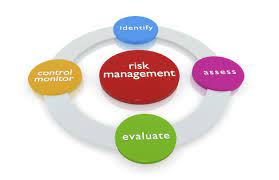When it comes to Forex trading, the potential for profit is alluring, but the risks can be equally daunting. However, traders have a range of strategies at their disposal to mitigate these risks and protect their investments. In this article, we will delve into the world of risk management and explore various options that traders can employ to safeguard their capital.
1. Stop-Loss Orders: The First Line of Defense
One of the fundamental tools in a trader’s arsenal is the stop-loss order. This simple yet powerful tool allows traders to set a predefined price level at which their position will automatically be closed, limiting potential losses. This stop-loss order can be a real lifesaver when markets move unexpectedly, ensuring that losses are contained and don’t spiral out of control.
2. Take-Profit Orders: Secure Your Gains
In addition to stop-loss orders, take-profit orders are equally important for risk management. These orders allow traders to lock in profits by specifying a price level at which a position will be automatically closed, ensuring that gains are realized before market conditions reverse. By using take-profit orders strategically, traders can prevent greed from eroding their hard-earned profits.
3. Diversification: Don’t Put All Your Eggs in One Basket
Diversification is a cornerstone of risk management in any investment strategy, and Forex trading is no exception. By spreading their investments across different currency pairs and asset classes, traders can reduce the impact of a poor-performing trade on their overall portfolio. Diversification minimizes the risk of a catastrophic loss, as the performance of one asset is less likely to dictate the fate of the entire portfolio.
4. Hedging Strategies: Protecting Your Capital
For more advanced traders, hedging strategies provide a way to protect their capital from adverse market movements. Hedging involves opening multiple positions in different directions simultaneously. For example, if a trader holds a long position on the EUR/USD currency pair, they might open a short position on the same pair or a correlated currency pair. This way, if the market moves against their initial position, the second position can offset some or all of the losses, effectively hedging their bets.
When implementing hedging strategies, it’s essential to consider the associated costs, such as spreads and swaps, which can eat into profits. Additionally, not all brokers allow hedging, so it’s crucial to choose a broker that aligns with your risk management strategy.
Conclusion: Empowering Traders to Manage Risk
In the volatile world of Forex trading, risk management is paramount. Traders must be proactive in protecting their capital, and this involves a combination of tools and strategies. Stop-loss and take-profit orders act as the first line of defense, while diversification spreads risk. For those willing to delve deeper into risk management, hedging strategies offer an additional layer of protection.
Remember that risk is inherent in trading, and no strategy can guarantee success every time. It’s essential to thoroughly research and understand the tools and strategies you employ and to continually adapt your approach to changing market conditions.

